Artists’ estates are often an important port of call in the planning of exhibitions. We talk to Hadwig Goez, Head of the Baumeister Archive, about the artistic and written estate of Willi Baumeister, whose works are featured in the exhibition ART FOR NO ONE. 1933-1945.
Hadwig, perhaps you could start by telling us what exactly the Baumeister Archive is.
The Archive Baumeister is a research institution where the artistic and written estate of Willi Baumeister is preserved. Baumeister died in Stuttgart in 1955. His estate was then kept privately with the family for a time, but since 2005 the archive has been housed in the Kunstmuseum Stuttgart. Even before 2005, however, specifically research scholars were able to study the pieces in the estate.
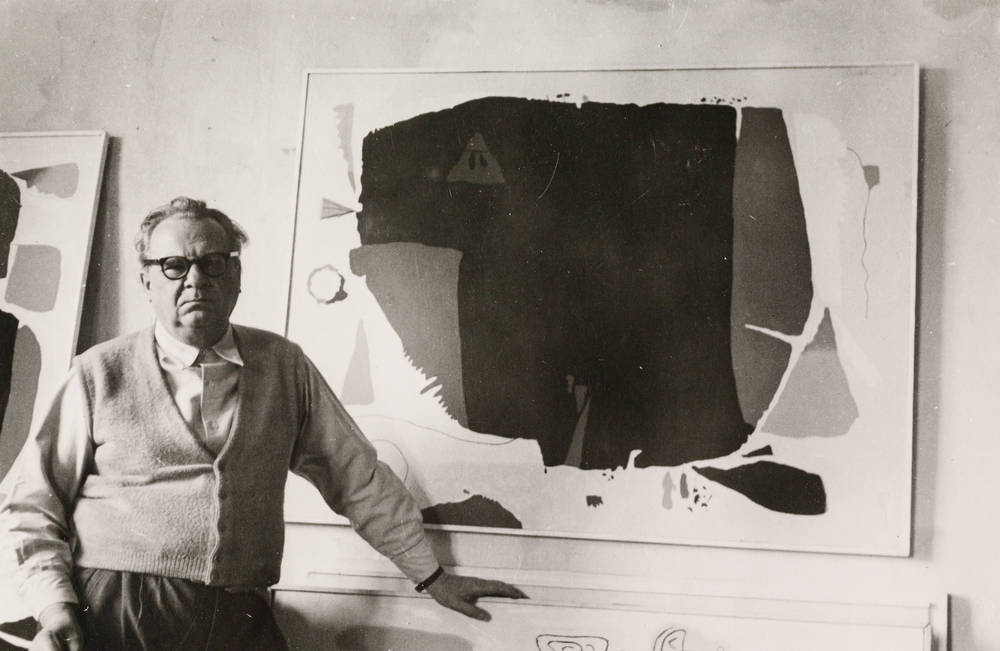
What specifically is housed in the Baumeister Archive?
The artistic estate comprises original works by Willi Baumeister, which we keep here in the archive. That means that the archive room where we work simultaneously serves as the storeroom for the works on paper. These include not only drawings, but also prints comprising serigraphs, lithographs, and etchings. On top of this, there are designs for stage sets and typographic sketches. But Baumeister’s sketchbooks are also in the archive, along with a small but surprising collection of Baumeister’s textile designs, which he produced in the 1940s and 1950s for the Pausa company. Here, we have a small selection of neckerchiefs and decorative fabrics that Baumeister designed.
The written estate, meanwhile, comprises not only his correspondence but also articles in the press, meaning newspapers and magazines, as well as books and exhibition catalogues in which Baumeister is mentioned. We also have copies of his diaries in the archive. Alongside the written archival materials, we also have a small collection of original sound recordings here. These are primarily radio interviews. Alongside these original recordings of Baumeister, there is also a series of video interviews with contemporaries of his that Baumeister’s daughter Felicitas conducted together with Jochen Cannobi in the 1980s. Among these are interviews with Alfred Gunzenhauser and Marta Hoepffner.
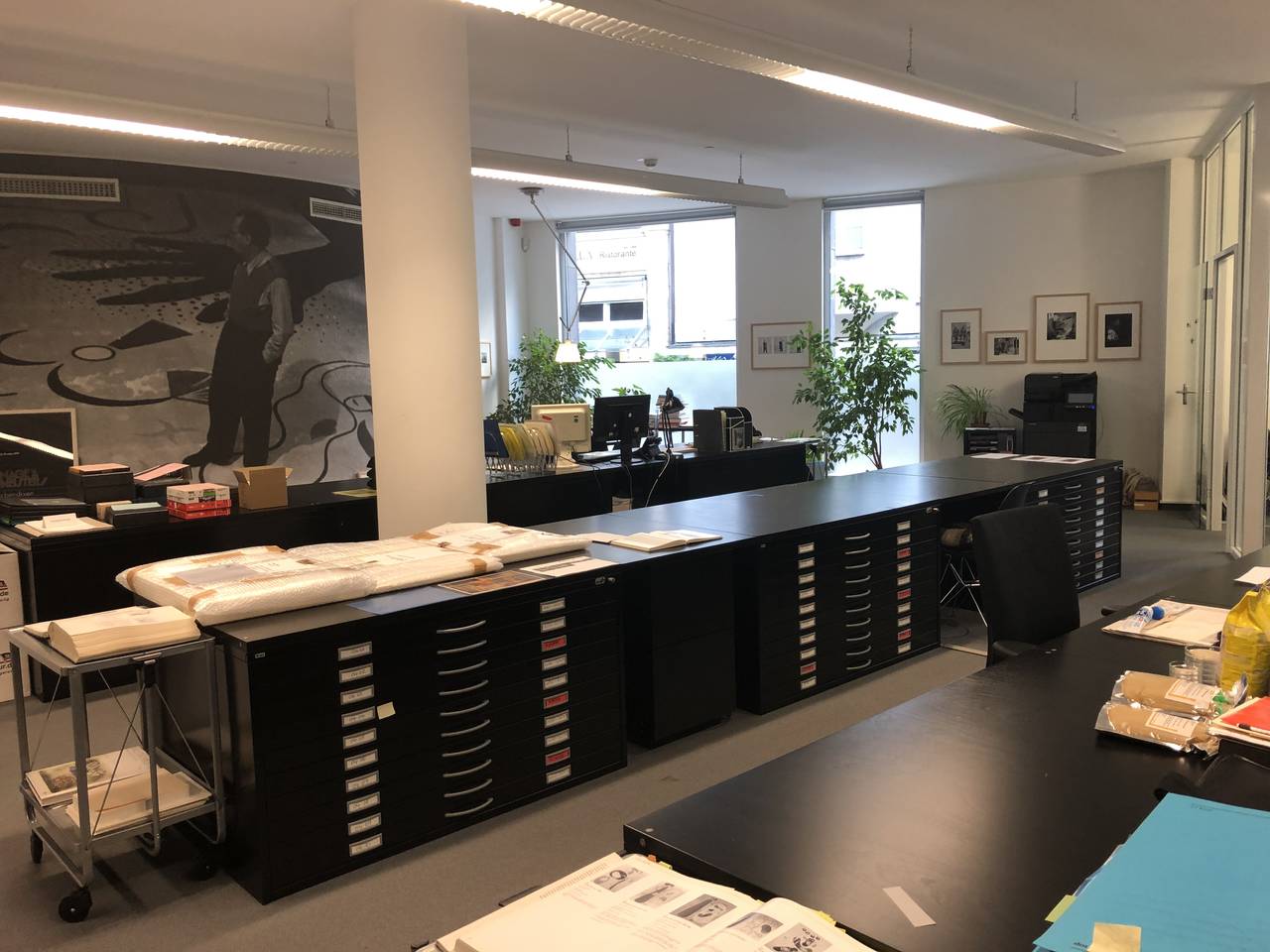

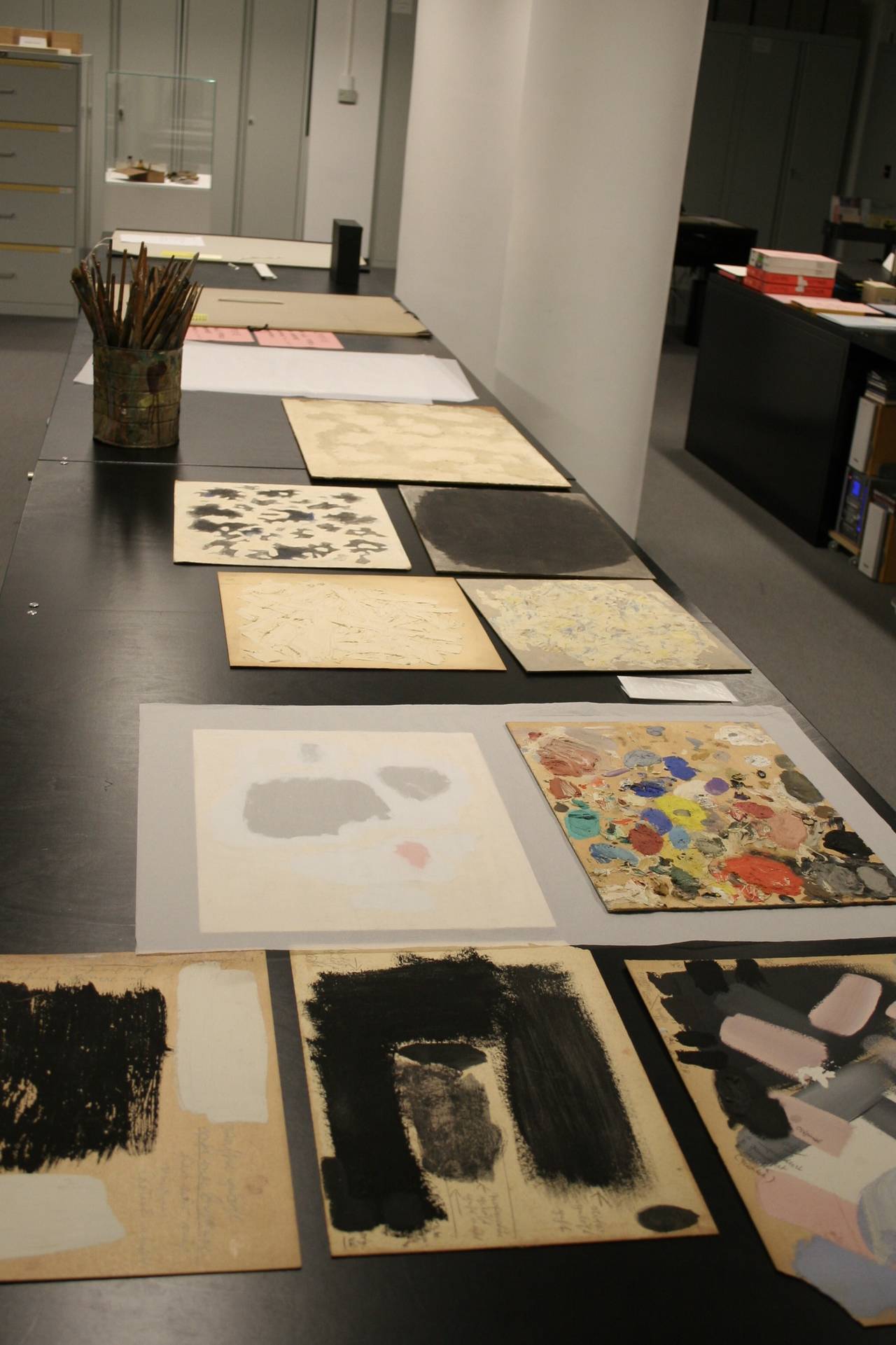
What exactly are your specific tasks as head of the archive?
One of my most important tasks is first and foremost to keep track of all the projects. We do get quite a few requests for loans of objects or archival materials that are then shown at various exhibitions. A not insignificant part of my work here is also communication with colleagues from the Kunstmuseum Stuttgart. I myself also curate exhibitions for the museum drawing on materials from the archive.
Then there are research projects, of course, that we supervise. We have a lot of researchers coming to us who consult the archive with a particular topic or request. I clarify things in advance with them and make sure they can access their material as quickly and straightforwardly as possible. And if I can, I give them tips on where they can find even more information on their topic. Twice a year, we also have an experts’ day when we examine works that are not yet listed in the catalog raisonné. These requests often come from auction houses or private individuals. A panel of several experts then assesses whether the work is an original or not. Generally, the works can be categorized with some precision, but every now and again the origin remains unclear and then you just have to leave it at that.
Although it is obviously difficult with so many holdings, do you have a favorite object or item from the archive?
There are a great many of them, of course. I particularly like the postcard that Baumeister sent to the State Academy of Fine Arts in 1952. At the time, he was a professor there and sent the card to apologize for not being able to attend a meeting due to pain in his foot. I also really like a paper napkin on which the sketch for a stage set that Baumeister designed in 1952 has been preserved. He must actually have sketched the stage set briefly on a napkin while in the dining car on a train. I find it very curious that something like this has been kept, that it wasn’t simply thrown away.
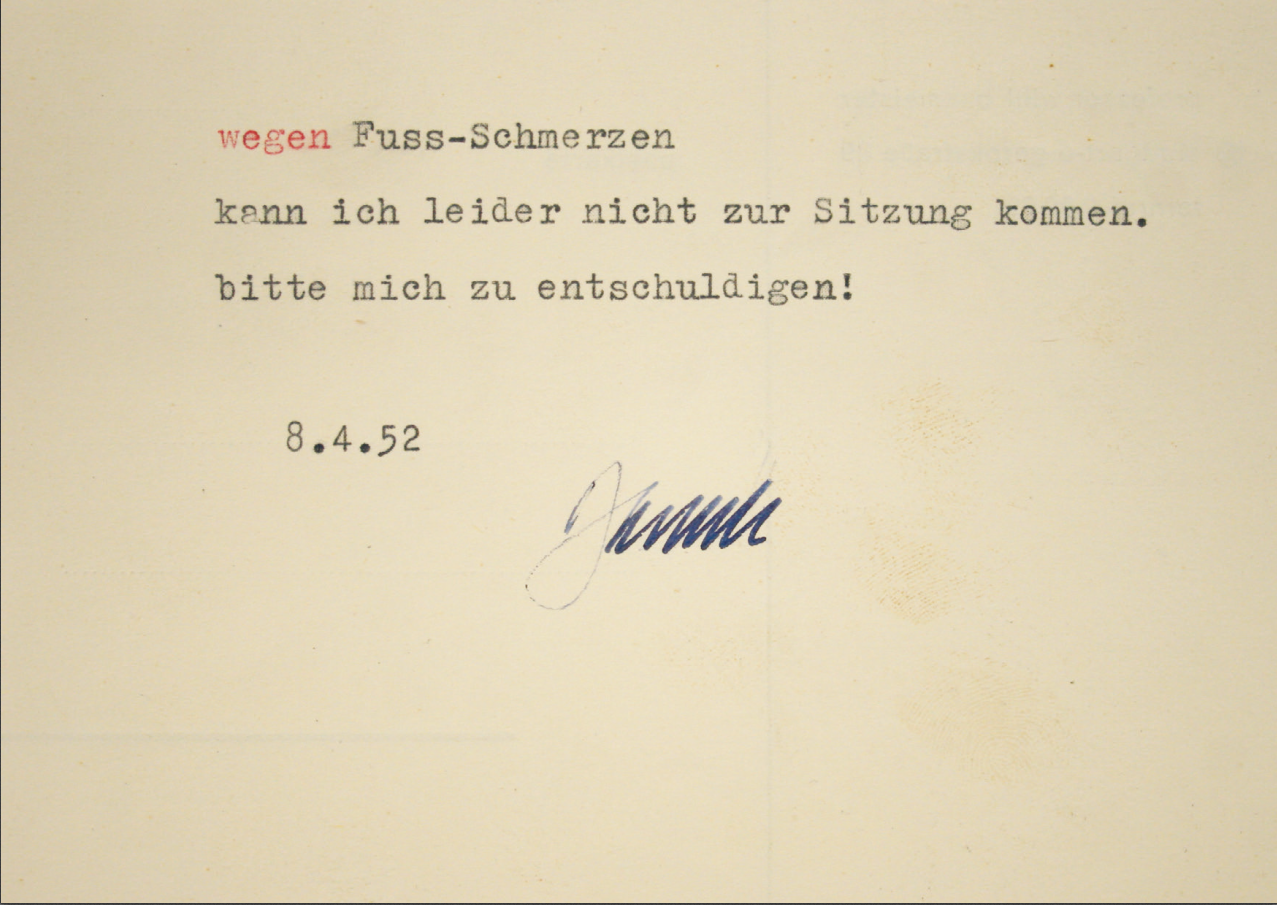
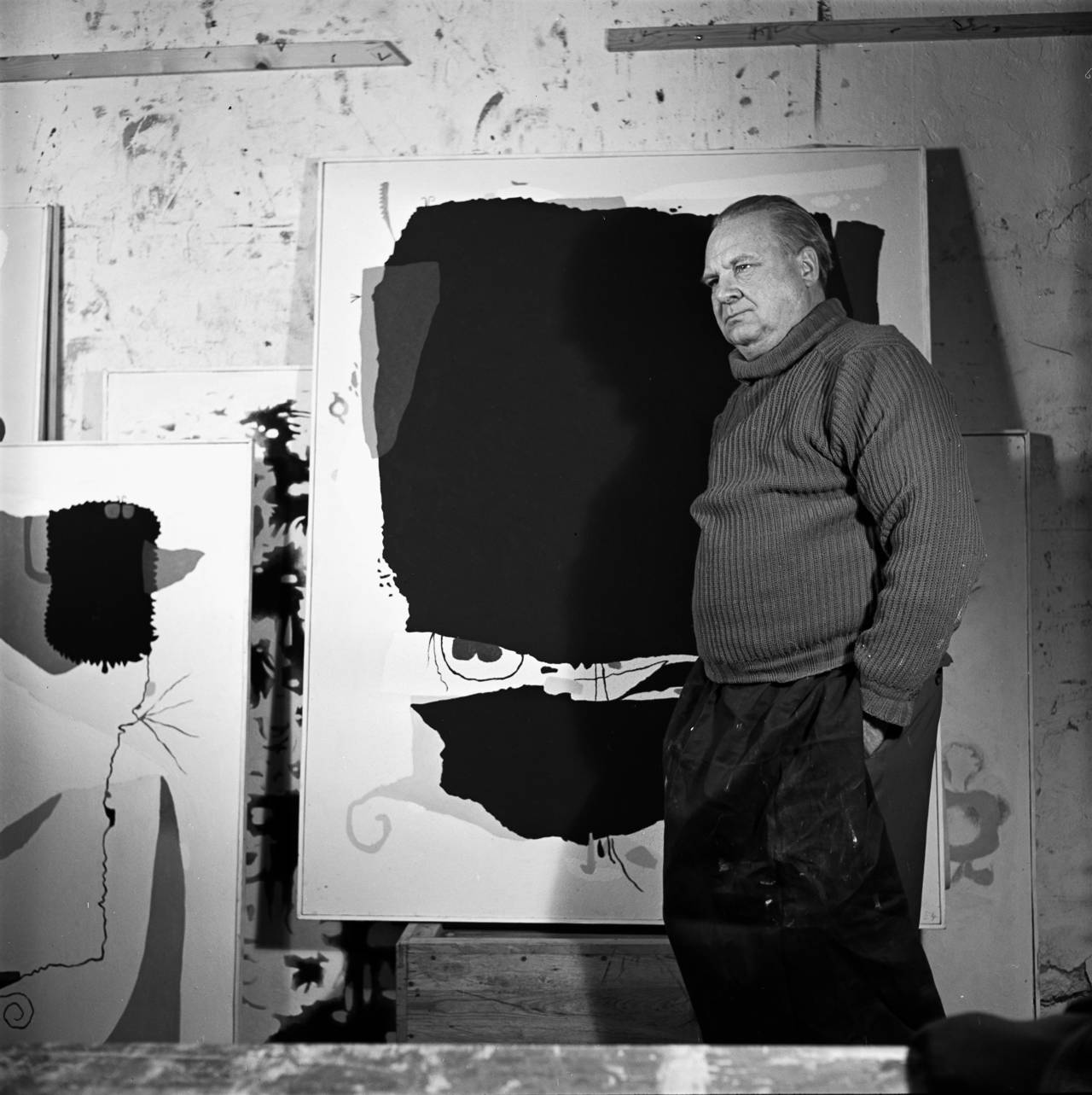
You have a lot of researchers coming to the archive, sometimes from a long way away. Who are your visitors and how do you work together?
The researchers who come to us come largely from Germany, Austria, or Switzerland, but we also have two Japanese researchers who have been studying Baumeister and his teacher Adolf Hölzel for years now. They are the ones who have travelled furthest to visit the archive – at least since I’ve been here. Sometimes, with such huge distances, an in-person visit is just not possible. In that case, we still try to do as much as we can. When we get enquiries, they are often initially via e-mail. And if we get an enquiry from Australia and the material is not that extensive, then we scan the letters. Among the researchers, there are often students carrying out research for their Bachelor’s, Master’s, or PhD theses who contact us. And of course, there are curators carrying out research for exhibitions and texts. So the vast majority are art historians.
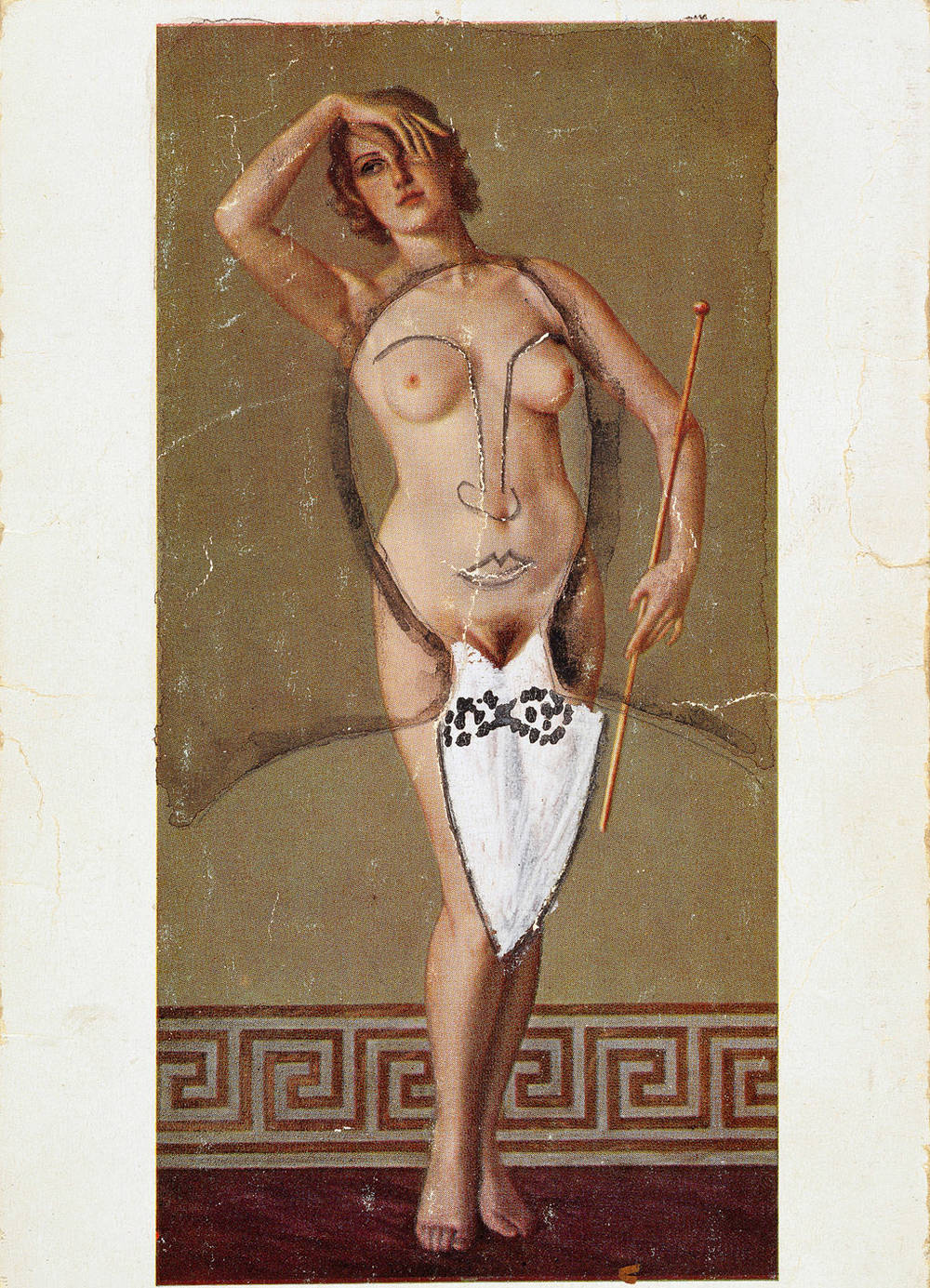
But you don’t only work with art historians, right?
Exactly, we are now working on a research project with restorers, too. The project is a collaboration with the Stuttgart State Academy of Art and Design and developed out of the exhibition project COMB, PASTEL, AND BUTTERMILK. As part of this project, we addressed Baumeister’s painting technique in an empirical way. This resulted in the new research project in which the works themselves, the materials, the binding agents, and picture media are now being closely examined in the workshop of the Academy’s restoration department. I find all that really exciting, and in 2025 Kunstmuseum Stuttgart will be holding an exhibition presenting the findings.
If our readers are now really enthusiastic and want to visit the archive, can they do so? Can anyone use the archive?
For research matters, we try to do everything we can, of course. For purely personal interest, it’s a bit more difficult. We can’t afford that in terms of staffing, but for anyone who is interested in the archive and the work that goes on here, we offer guided tours four times a year. This is known as Backstage and is a fixed item in the education program at Kunstmuseum Stuttgart. During the tours, you get a good insight into what is in the archive. Then, of course, we also open up a drawer or two. And if there is an exhibition on Willi Baumeister at Kunstmuseum Stuttgart, the tour is then themed around that. Of course, you can also book a guided tour of the archive as a group.









